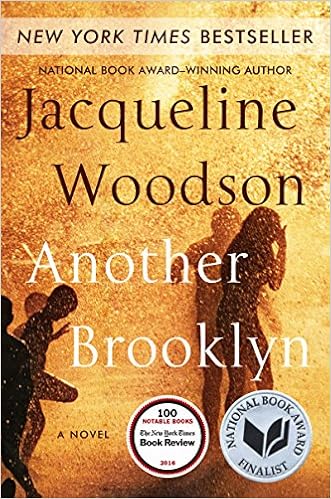4 Stars
This short
coming-of-age story is a beautiful read.
August, an
Ivy League-educated anthropologist, looks back at her life in Brooklyn 20 years
earlier in the 1970s. She becomes
friends with three other girls in her neighbourhood: Sylvia, Angela and Gigi. They form such a strong bond that at times
they are almost indistinguishable.
The book
examines the value and power of female friendships. The girls share “the weight of growing up
Girl in Brooklyn.” Friendship gives them
a sense of safety and strength: “The
four of us together weren’t something [the boys] understood. They understood girls alone, folding their
arms across their breasts, praying for invisibility.” Friendship allows for the sharing of
confidences: “We opened our mouths and
let the stories that had burned nearly to ash in our bellies finally live
outside of us.” The girls encourage each
other: “each one moved so that the other
could continue moving.” Perhaps more
than anything, friendship gives them a sense of home they do not feel elsewhere: “We saw the lost and beautiful and hungry in
each of us. We saw home.”
The girls witness
and/or experience poverty, broken homes, the flight of whites from the neighbourhood,
drug abuse, the effects of the Vietnam War on black families, the influence of
the Nation of Islam, and the dangers of predatory men.
August has
“a longing to be a part of who [the other three girls] were, to link my own arm
with theirs and remain that way.
Forever.” When she becomes part
of their circle, one of the girls tells her, “You belong to us now” and August adds, “And for so many years, it
was true.” Of course the girls drift apart
or are pulled or lured away, and each is left with a “deep gap.” But, nonetheless, their identities remain
shaped by the friendship they shared.
The
narrative has a fragmented structure.
Memories are not experienced chronologically so it makes sense that the
adult August’s memories move back and forth through time. The language also seems appropriate to
memories. It is very lyrical and flows
like one memory flows into another. I
almost felt as if I should be reading the book aloud - like poetry is meant to
be read.
I was
fortunate to have a close-knit group of four friends when I was in high school,
and I was amazed at how well the author captured the intensity, inspiration and
joy of youthful friendships. The novel
can be read quickly but it deserves to be read more than once.

No comments:
Post a Comment